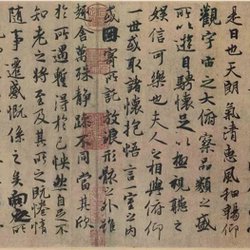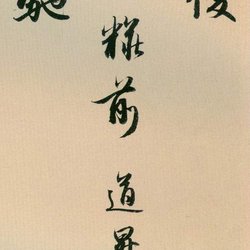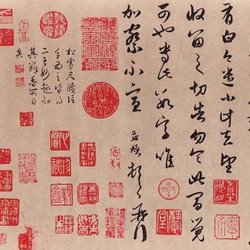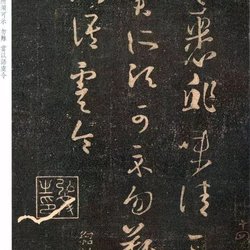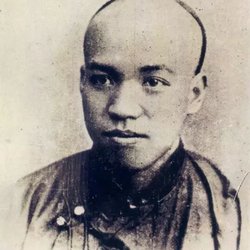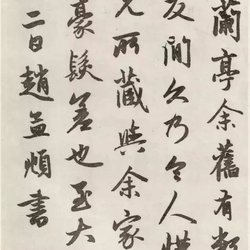Zhou Xuerui, courtesy name Manyun, was a Jinshi in the 20th year of Daoguang reign (1840) and was born in Wucheng, Zhejiang. Good at painting. On the eighth day of the twelfth lunar month in the 30th year (1850), together with Wang Tingru, Wang Rifang, Qin Bingwen, Ye Daofen, Feng Peiyuan, Zhang Shibao, Hua Yilun, and Yu Fenghuanghan, they went to Songjun nunnery in Beijing to cool off the cold. middle. Xuerui wrote "Pizhou Fishing Flute Picture", which was inscribed by Yu Fenghan in the same year. - Source: "Dictionary of Family Names of Chinese Artists", Shanghai Fine Arts Publishing House, January 1980 edition.
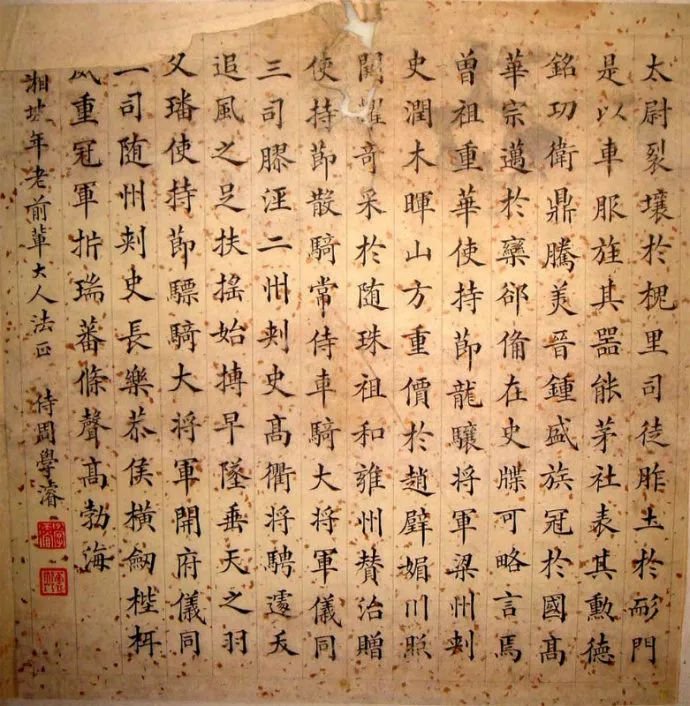
A selection of Luo Jiafu in small regular script among the ten scholars of the Qing Dynasty: a native of Shanyin, the prefect of Fenzhou, his original name was Jiamo, and his native place was in Daxing.
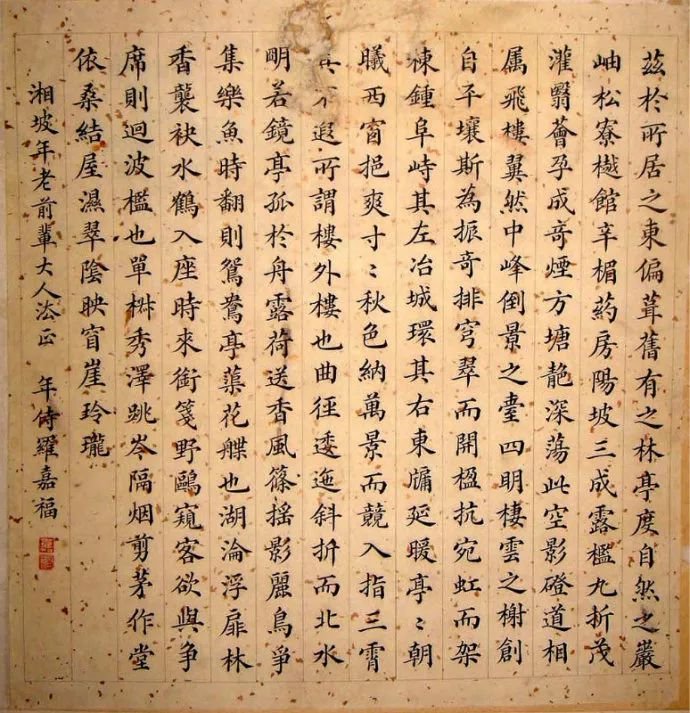
Hu Guangtai, a native of Shanyin, was selected from the lower regular script of the ten bachelors of the Qing Dynasty. He was born in 1840 and ranked second in the 87th Jinshi in the Gengzi Academy Examination List in the 20th year of Daoguang in the Qing Dynasty.
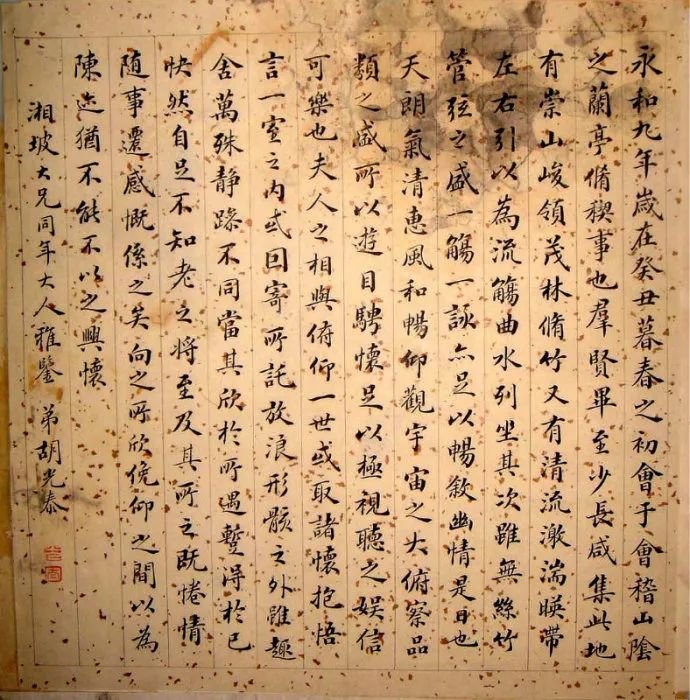
Huang Zhuo (Qing Dynasty), also known as Shujie, was good at transforming people. Daoguang Gengzi was a Jinshi, changed to Shujishi, and was awarded the title of editor. He successively served as a scholar of Sichuan, Zhejiang, and an official to the left minister of the Ministry of Civil Affairs. He had a good relationship with Zeng Guofan. He was a famous scholar in Hunan in modern times and the author of "Jieyuan Collection".
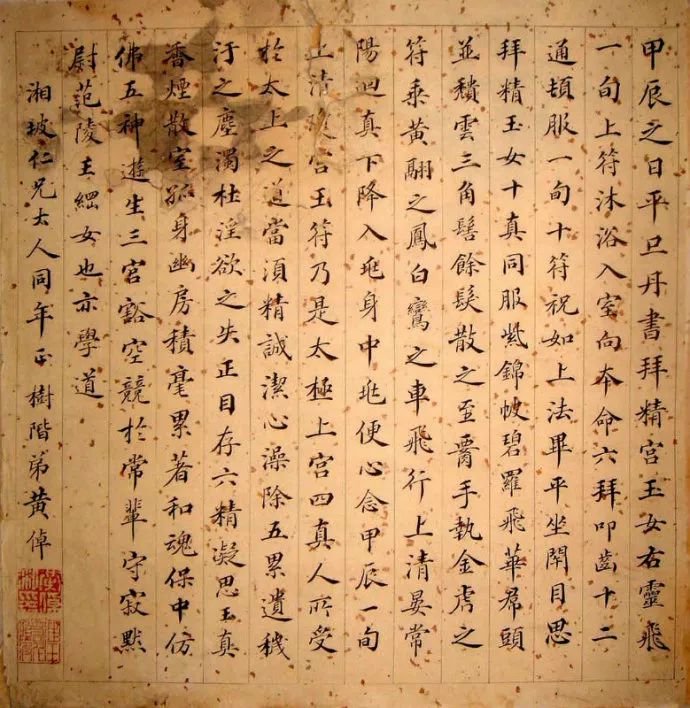
Kuang Yuan, whose courtesy name is Hequan, was a native of Jiaozhou, Shandong Province. In the 20th year of Daoguang's reign (1840), Hanlin was an official editor and editor. From 1844 to 1845, he served as the examiner of Jiangxi and Shanxi rural examinations. In February 1848, Emperor Daoguang sent Kuang Yuan, then editor of the Hanlin Academy, to give lectures to the prince Yi Chi. After he was dismissed from office, he gave lectures at Luoyuan Academy. The flaw of the class is the freehand brushwork of landscapes. —Information source: "History of Qing Painters" and "Dictionary of Names of Chinese Artists", Shanghai Fine Arts Publishing House, January 1980 edition
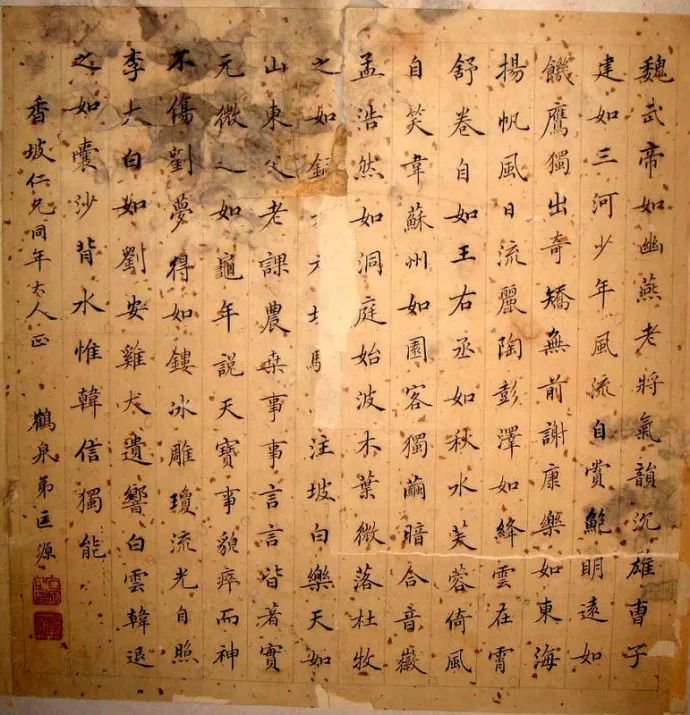
Selected in lower regular script among the ten scholars of the Qing Dynasty: Ni Yingfu: courtesy name Keqi, a native of Kunming. In the 20th year of Daoguang's reign (1840), he became a Jinshi and learned about Zunyi Prefecture in Guizhou. The grass method is Mifu. Quite clear. —Source: "Dictionary of Chinese Artists' Names", Shanghai Fine Arts Publishing House, January 1980 edition
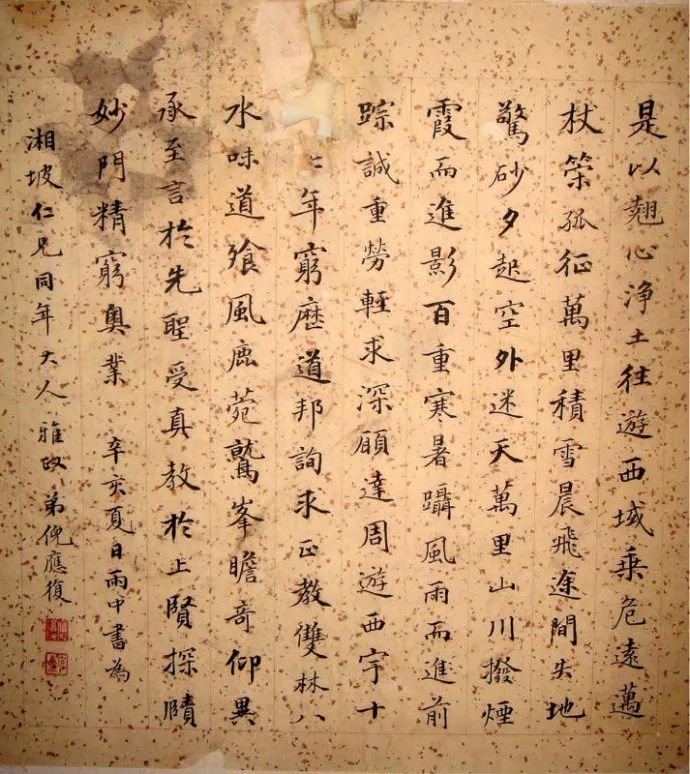
Selected regular scripts from the ten scholars of the Qing Dynasty Zheng Dacheng: courtesy name Weixin, a native of Xiangfu, Henan.
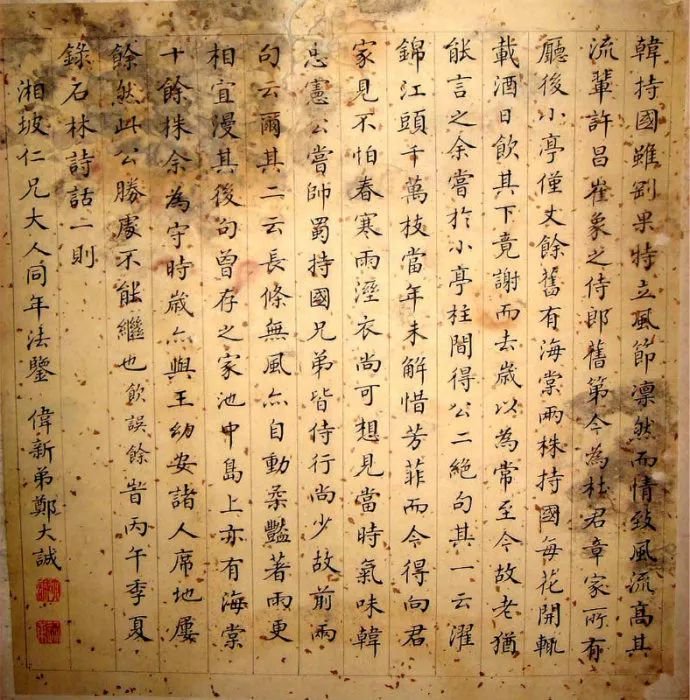
A selection of the ten bachelors of the Qing Dynasty in small regular script. Zheng Qiongzhao: a Marquis of Fujian Province. In 1840, the 26th ranked Jinshi in the Gengzi Academy Examination List in the 20th year of Daoguang's reign in the Qing Dynasty.
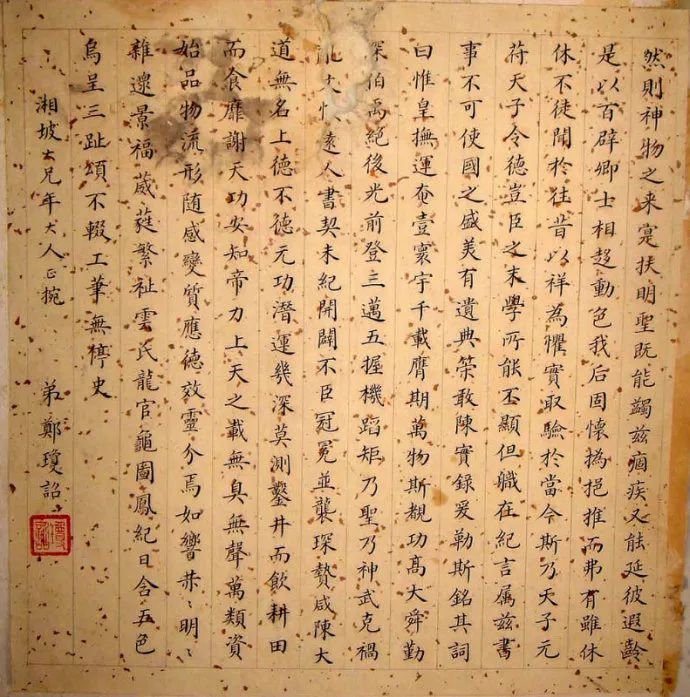
A selection of the ten scholars of the Qing Dynasty in small regular script. Song and Jin Dynasties (1802-1874): a native of Liyang, Jiangsu Province (now Yixing City) in the Qing Dynasty. His courtesy name is Xifan and his nickname is Xuefan. He was a Jinshi in the Daoguang period of Yizong. Taught editor. In 1852 (the second year of Emperor Xianfeng's reign of Emperor Wenzong), he was promoted to bachelor's degree and moved to the position of minister of Guanglu Temple. The following year, he was appointed Zuo Shilang of the Ministry of Rites. In 1855, he moved to Fucheng, the clan's mansion. In 1856, after the Qing army's "Jiangnan Camp" failed, Shu hired ships to carry the Qing army into the Yangtze River and attacked the Taiping Navy. He compiled "Records of Yizong" and was promoted to cabinet bachelor's degree, deputy director of household affairs, and minister of the second department of industry. In 1858, he was awarded the title of Minister of the Ministry of Works. In 1861, in order to suppress the rebellion of the Taiping Army, Shu asked to expand the military power of Zeng Guofan, the governor of Liangjiang. He also asked to promote Zuo Zongtang, Shen Baozhen and others. In 1862 (the first year of Mu Zong's reign), he was transferred to the governor of Cangchang. In 1867, he moved to the cabinet as a bachelor. He appointed Woren and others to oppose the Westernizationists' learning of Western skills, advocating adhering to the ancestral system, paying attention to etiquette and morality, and maintaining the Gangchang Mingjiao. In 1871, he wrote a letter criticizing the Fuzhou Shipping Bureau for excessive waste and advocating that the Fuzhou Shipping Bureau and Jiangnan Shipbuilding Bureau stop manufacturing ships, which caused controversy. In 1873, he moved to the Ministry of Household Affairs, Zuo Shilang, and wrote "Shui Shui Yun's Report in the Pavilion".
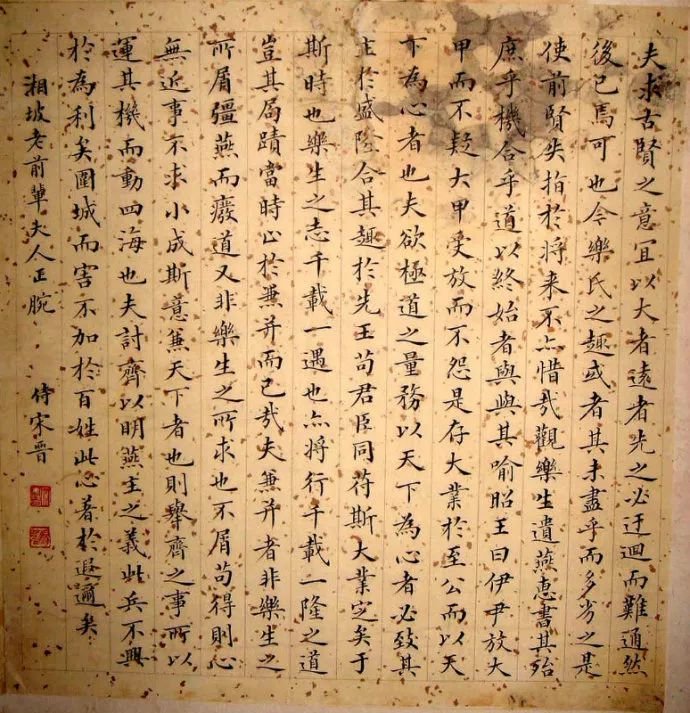
Zou Zhenjie, selected from the regular script of the ten bachelors of the Qing Dynasty, was named Yunjie, a native of Liuyang, Hunan, editor of the Hanlin Academy, supervisory envoy of several provinces in Beijing, and prefect of Xunzhou, Guangxi.
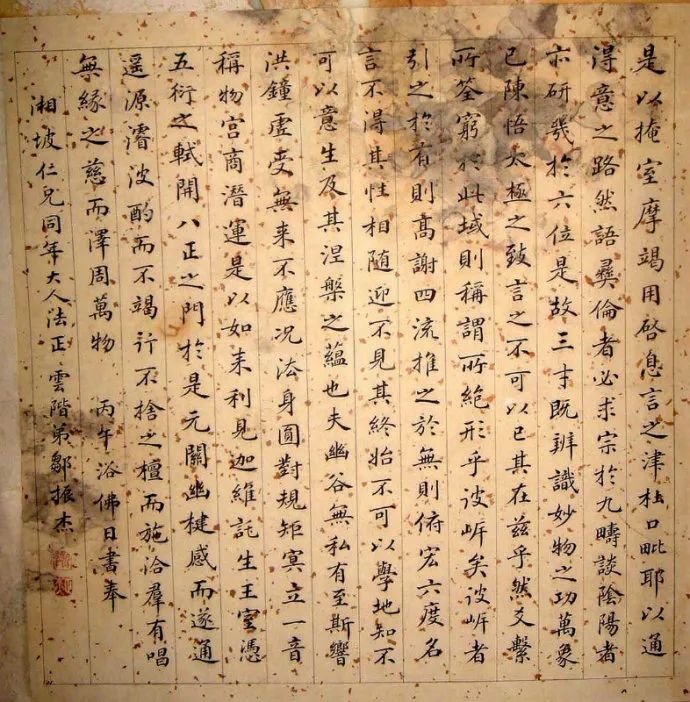
The Ming Dynasty has been in chaos since the rise of Zhu Yuanzhang. It took 277 years from the overthrow of the Yuan Dynasty and the unification of the country to the time when Li Zicheng conquered the Meishan Mountain where Zhu Youjian hanged himself in Beijing. In the past three centuries, all the emperors in the imperial court were very fond of calligraphy. After Emperor Chengzu of the Ming Dynasty established his capital in Beijing, he immediately began to govern the country by recruiting scholars from all over the world who were good at calligraphy, enriching the palace, and rewriting imperial edicts and documents. Emperors of the Ming Dynasty such as Renzong and Xuanzong also loved calligraphy very much, especially copying "Lanting". Shenzong had been working on calligraphy since he was a child, and he never left Wang Xianzhi's "Yatou Wan Tie", Yu Shinanlin's "Le Yi Biography" and Mi Fu's "Wen Fu". 》. Therefore, the scholar-bureaucrats of both the government and the public attach great importance to calligraphy studies, and they all like regular script and running script with elegant postures, and they almost completely inherited Zhao Mengfu's style.
Chinese calligraphy in the Qing Dynasty has experienced a difficult transformation in its nearly 300 years of development. It broke through the barriers of calligraphy since the Song, Yuan and Ming Dynasties, and created the study of stele, especially in seal script, official script and the stele style of the Northern Wei Dynasty. The achievements in calligraphy can be compared with the regular script of the Tang Dynasty, the running script of the Song Dynasty, and the cursive script of the Ming Dynasty, forming a majestic and vigorous calligraphy style. In particular, calligraphers of stele studies borrowed the spirit of the past to create the present and expressed their individuality in calligraphy creations, which made the calligraphy world very active, with various schools and flourishing situations.
This article was first published by 15LianCi.com. Please indicate when reprinting: https://www.seowhy15.com/a/424.html

